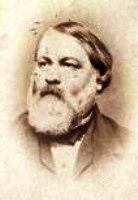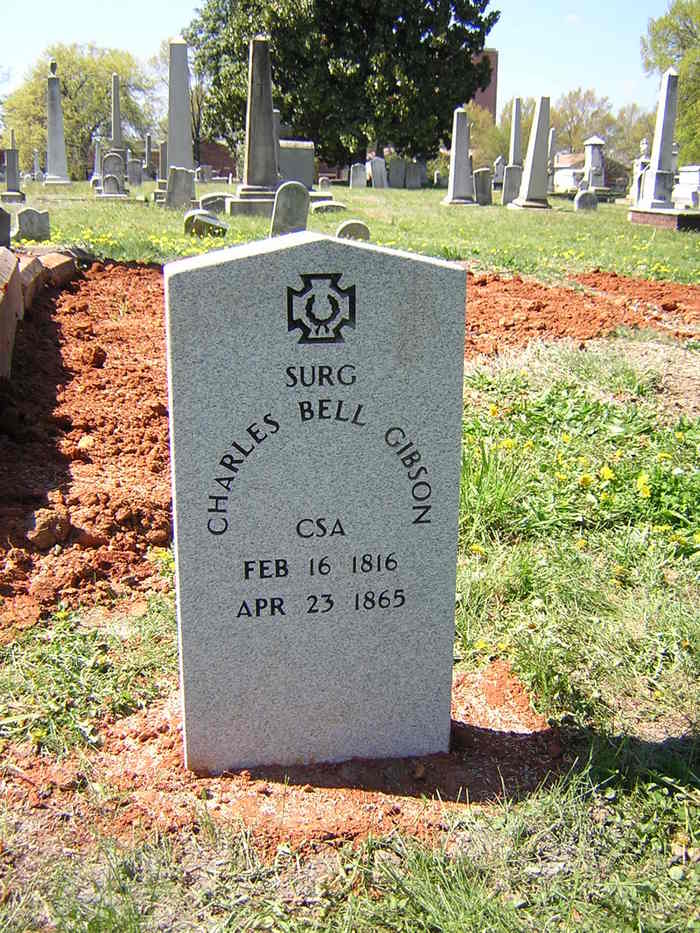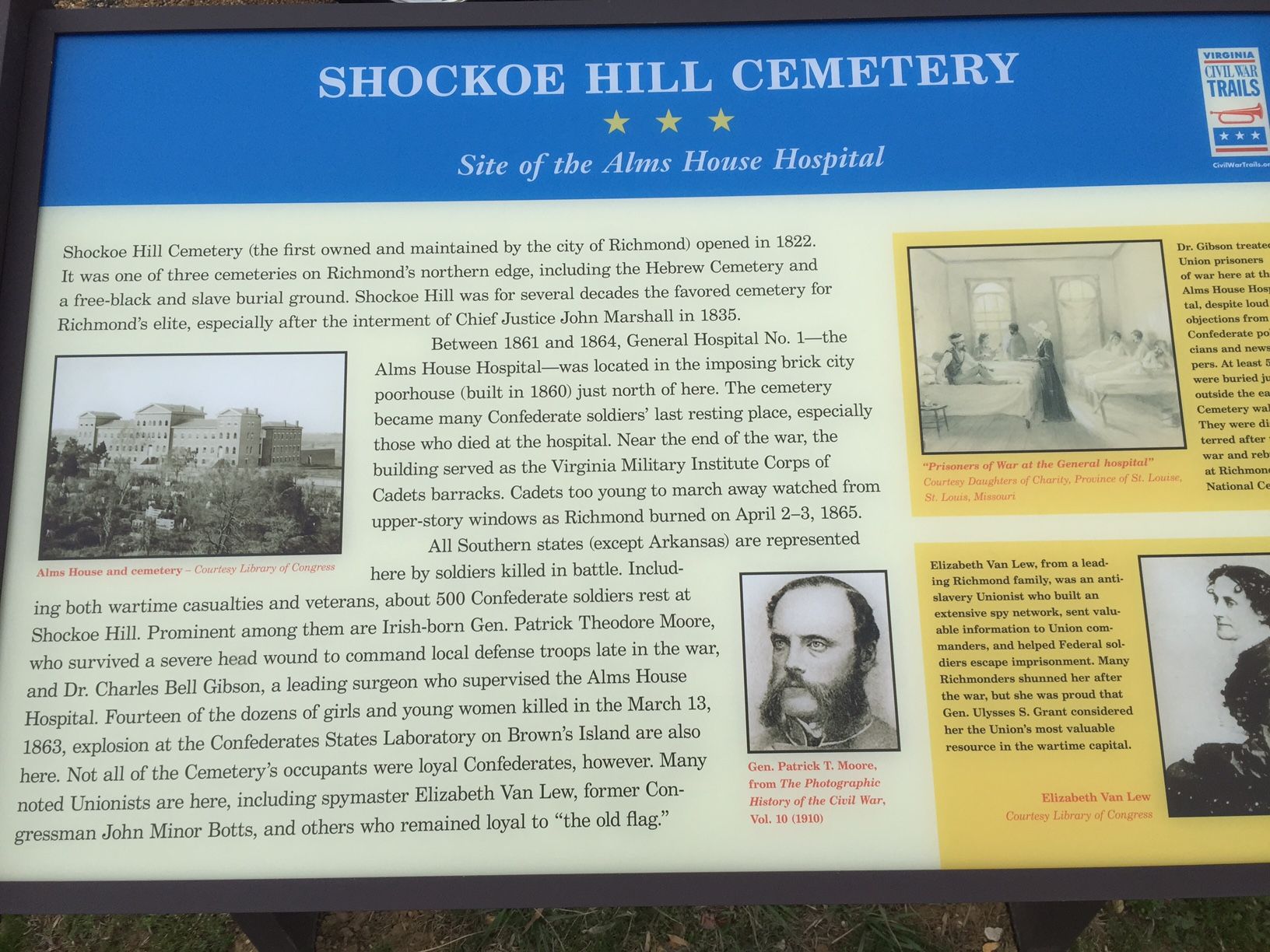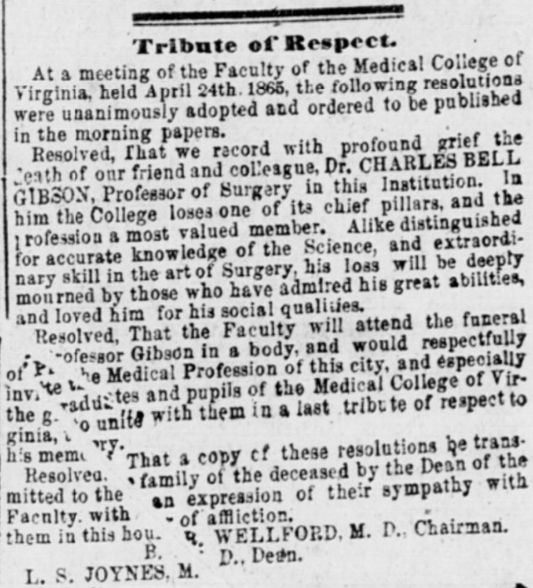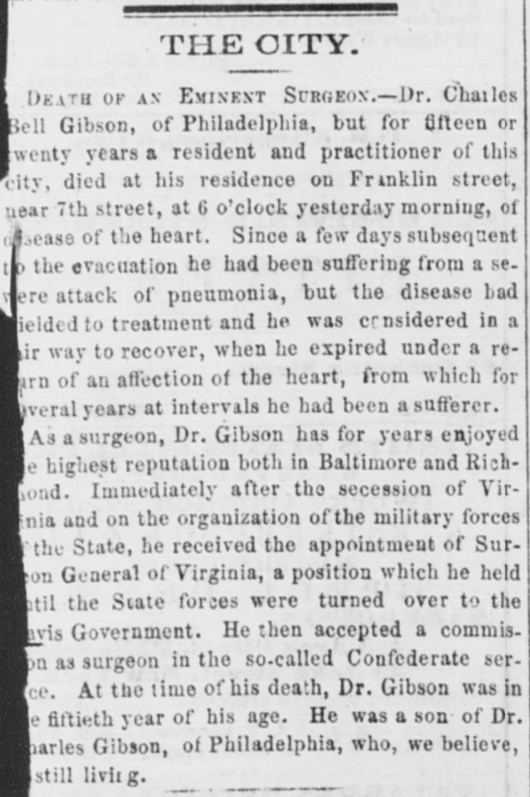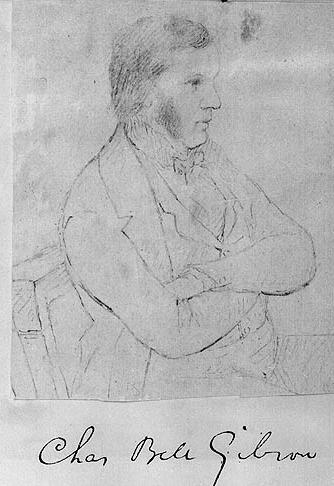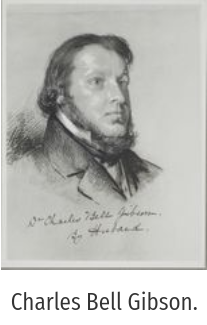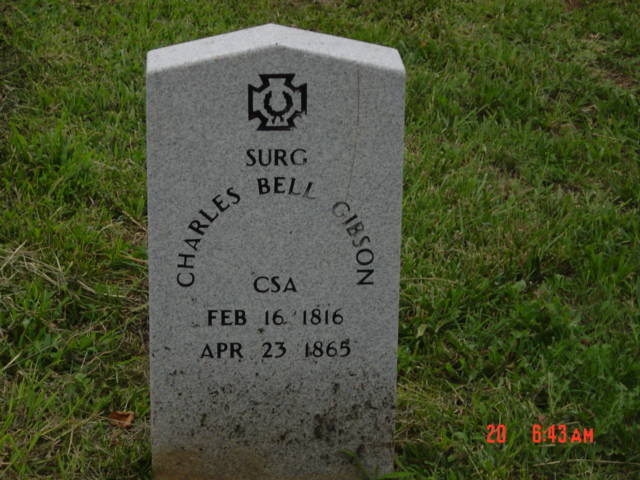Charles was a leading physician of his time and a pioneer of surgical practice in Virginia.
Charles was the son of prominent surgeon William Gibson, and a graduate of the University of Pennsylvania Medical School. He served as Chief of Surgery at the Medical College of Virginia from 1847 until his death. In 1848, he performed the first surgical procedure in Virginia using general anesthesia. He formed a medical partnership in 1858 with Dr. John Syng Dorsey Cullen, who went on to become the Medical Director for the First Corps, Army of Northern Virginia. Of particular note, Charles published widely-read papers on femoral artery ligation, treatment of femur dislocations, and resection of a maxillary sarcoma.
After serving briefly as Surgeon-General of Virginia, immediately after that state's secession in 1861, Charles was commissioned a surgeon in the Confederate States Army. From 1861 to 1864, he was surgeon-in-charge of the C.S.A.'s General Hospital #1 in Richmond (the "Alms House Hospital", later also known as the "Officer's Hospital"). Early in the War he treated both Confederate and Union soldiers who were placed at that hospital.
He was married on 2 January 1838 to Ellen Eyre of Philadelphia, the daughter of Manuel Eyre and Anna Louisa Connelly. Charles and Ellen had at least eleven children: Sarah (b. & d. 1839), Charlotte (b. & d. 1840), William Eyre, Mary Elizabeth, James Cheston (1845-1847), Charles Bell (1847-1848), Beverly Tucker, Anna Louisa, Charles Bell (1853-1876), Ellen Eyre, and Manuel Eyre. His son William resigned from West Point in April 1861, and thereafter served as a Confederate artilleryman. Beverly served as a naval cadet.
Exhaustion and pneumonia, coupled with heart trouble, led to his death shortly after the fall of Richmond. After his death, his wife Ellen sold his books and collection of medical specimens and moved back to Baltimore, and later to Philadelphia.
"DEATH OF AN EMINENT SURGEON - Dr. Charles Bell Gibson, of Philadelphia, but for fifteen or twenty years a resident and practitioner of this city, died at his residence on Franklin street, near 7th street, at 6 o'clock yesterday morning, of disease of the heart. Since a few days subsequent to the evacuation he had been suffering from a severe attack of pneumonia, but the disease had yielded to treatment and he was considered in a fair way to recover, when he expired under a return of an affection of the heart, from which for several years at intervals he had been a sufferer. As a surgeon, Dr. Gibson has for years enjoyed the highest reputation both in Baltimore and Richmond."
--(Richmond Whig, April 24, 1865).
"Dr. Gibson is a gentleman of the old school,...his father a physician of great repute in Philadelphia. His visits brot [sic] sunshine into the wards; he showed so much care for our situation in all respects, was so courteous & tender of our feelings, & ready to do everything in his power for us consistent with his duty & was withal so skillful in practice, that our feelings towards him amounted almost to veneration." (Colonel (later Maj. Gen.) Orlando B. Willcox, U.S.V., captured at First Bull Run and treated at General Hospital #1, August-October 1861; from "Forgotten Valor: The Memoirs, Journals & Civil War Letters of Orlando B. Wilcox" (Kent, OH: 1999).)
"No home in Richmond welcomed its guests with more genuine and genial hospitality than that of the Gibsons. [Dr. Gibson], on early and high graduation [from medical school], made his home in Richmond, rapidly acquiring reputation, popularity, and a great practice, especially in surgery. When war came he was promptly used by the state and Confederate governments, and became head of the most important hospital..." (Thomas Cooper DeLeon, "Belles, Beaux and Brains of the 60s." (New York: 1909).)
(Note: records from St. Paul's Episcopal Church in Baltimore show a birthdate of 12 October 1815).
Charles was a leading physician of his time and a pioneer of surgical practice in Virginia.
Charles was the son of prominent surgeon William Gibson, and a graduate of the University of Pennsylvania Medical School. He served as Chief of Surgery at the Medical College of Virginia from 1847 until his death. In 1848, he performed the first surgical procedure in Virginia using general anesthesia. He formed a medical partnership in 1858 with Dr. John Syng Dorsey Cullen, who went on to become the Medical Director for the First Corps, Army of Northern Virginia. Of particular note, Charles published widely-read papers on femoral artery ligation, treatment of femur dislocations, and resection of a maxillary sarcoma.
After serving briefly as Surgeon-General of Virginia, immediately after that state's secession in 1861, Charles was commissioned a surgeon in the Confederate States Army. From 1861 to 1864, he was surgeon-in-charge of the C.S.A.'s General Hospital #1 in Richmond (the "Alms House Hospital", later also known as the "Officer's Hospital"). Early in the War he treated both Confederate and Union soldiers who were placed at that hospital.
He was married on 2 January 1838 to Ellen Eyre of Philadelphia, the daughter of Manuel Eyre and Anna Louisa Connelly. Charles and Ellen had at least eleven children: Sarah (b. & d. 1839), Charlotte (b. & d. 1840), William Eyre, Mary Elizabeth, James Cheston (1845-1847), Charles Bell (1847-1848), Beverly Tucker, Anna Louisa, Charles Bell (1853-1876), Ellen Eyre, and Manuel Eyre. His son William resigned from West Point in April 1861, and thereafter served as a Confederate artilleryman. Beverly served as a naval cadet.
Exhaustion and pneumonia, coupled with heart trouble, led to his death shortly after the fall of Richmond. After his death, his wife Ellen sold his books and collection of medical specimens and moved back to Baltimore, and later to Philadelphia.
"DEATH OF AN EMINENT SURGEON - Dr. Charles Bell Gibson, of Philadelphia, but for fifteen or twenty years a resident and practitioner of this city, died at his residence on Franklin street, near 7th street, at 6 o'clock yesterday morning, of disease of the heart. Since a few days subsequent to the evacuation he had been suffering from a severe attack of pneumonia, but the disease had yielded to treatment and he was considered in a fair way to recover, when he expired under a return of an affection of the heart, from which for several years at intervals he had been a sufferer. As a surgeon, Dr. Gibson has for years enjoyed the highest reputation both in Baltimore and Richmond."
--(Richmond Whig, April 24, 1865).
"Dr. Gibson is a gentleman of the old school,...his father a physician of great repute in Philadelphia. His visits brot [sic] sunshine into the wards; he showed so much care for our situation in all respects, was so courteous & tender of our feelings, & ready to do everything in his power for us consistent with his duty & was withal so skillful in practice, that our feelings towards him amounted almost to veneration." (Colonel (later Maj. Gen.) Orlando B. Willcox, U.S.V., captured at First Bull Run and treated at General Hospital #1, August-October 1861; from "Forgotten Valor: The Memoirs, Journals & Civil War Letters of Orlando B. Wilcox" (Kent, OH: 1999).)
"No home in Richmond welcomed its guests with more genuine and genial hospitality than that of the Gibsons. [Dr. Gibson], on early and high graduation [from medical school], made his home in Richmond, rapidly acquiring reputation, popularity, and a great practice, especially in surgery. When war came he was promptly used by the state and Confederate governments, and became head of the most important hospital..." (Thomas Cooper DeLeon, "Belles, Beaux and Brains of the 60s." (New York: 1909).)
(Note: records from St. Paul's Episcopal Church in Baltimore show a birthdate of 12 October 1815).
Gravesite Details
Marker was placed in 2005.
